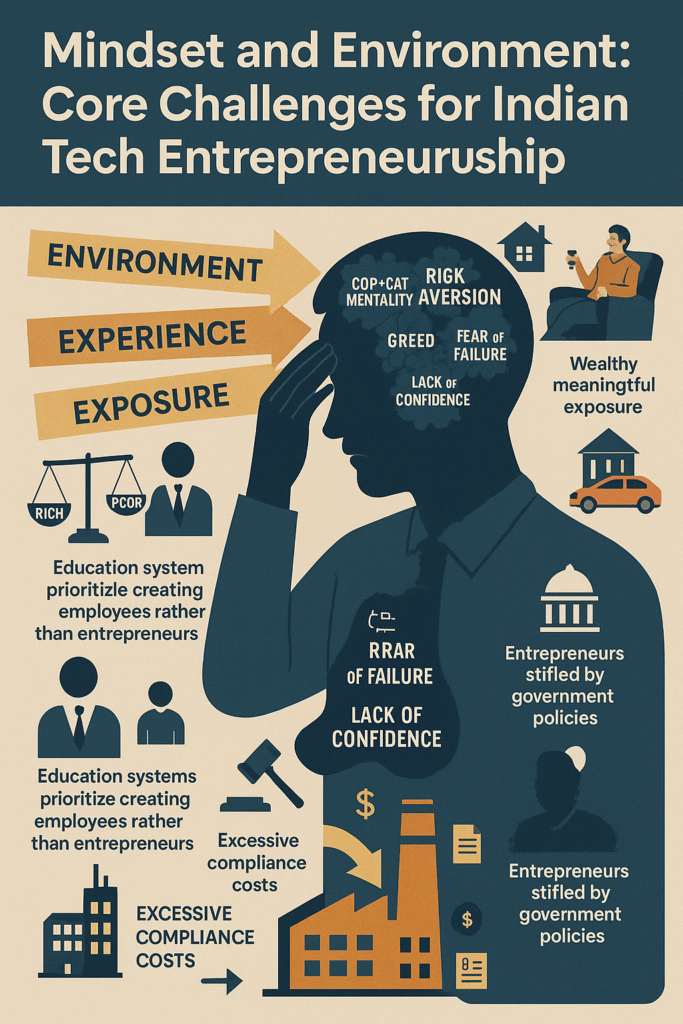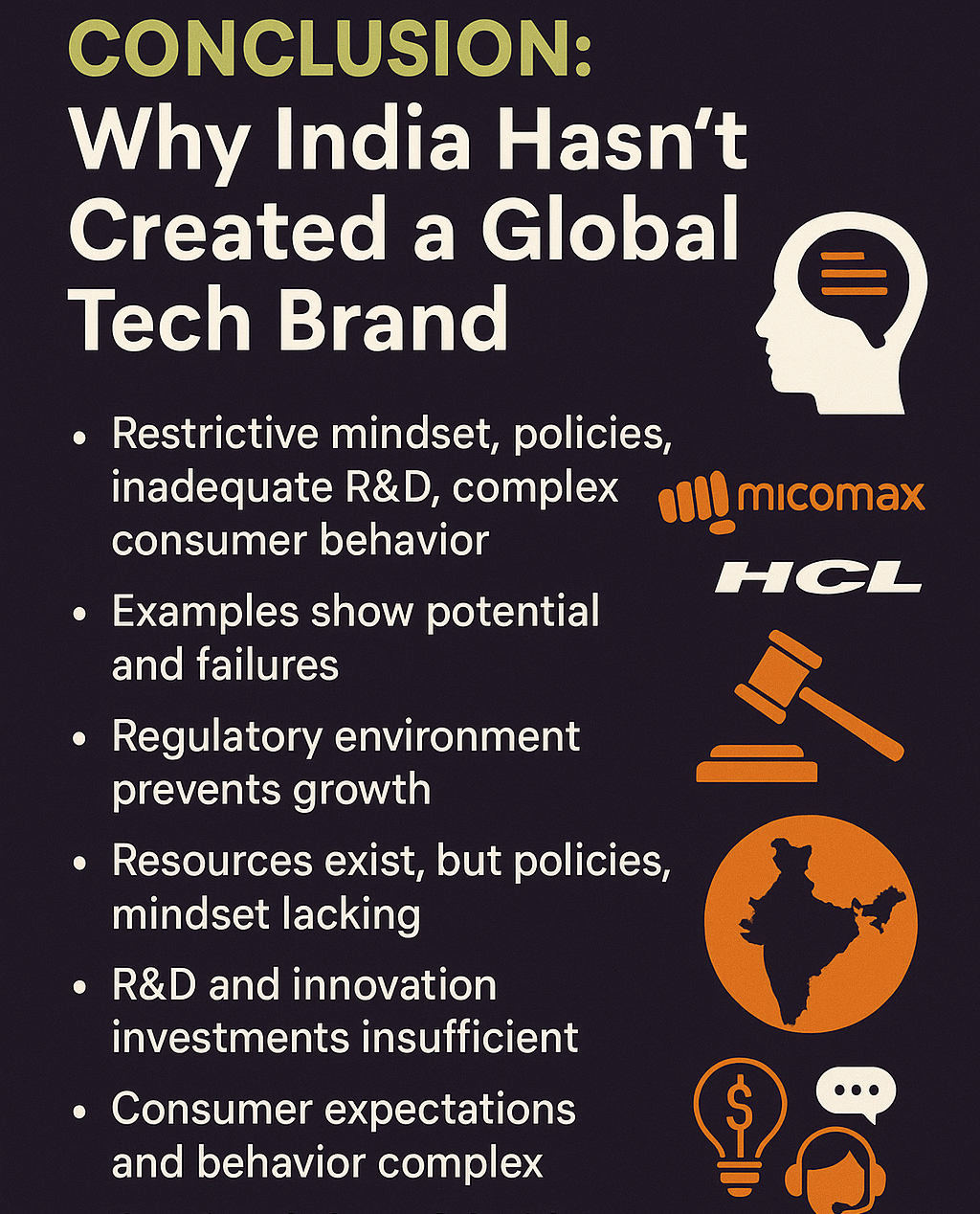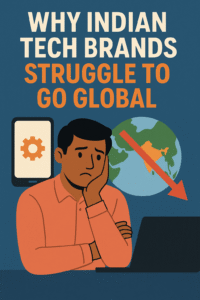
1. Introduction: Indian Tech Brand Success Stories and Disappointments

The story starts with the case of Micromax, an Indian smartphone company that went to the top speed by importing cheap Chinese phones and doing business in India, and thus getting ahead of Samsung in its home country and becoming a global top 10.
However, Micromax could not maintain its leadership as this is usually the case among Indian tech startups, who start strong but die out at the end.
Another case is the one of HCL, who was a giant in Indian hardware and enjoyed the take-off market share in the early 2000s, only to lose them completely then.
Most Indian smartwatch companies today copy the same models with profit motivation but lack of value addition and subsequently have not created a legacy of innovation or global standing.
The paradox, as set in the intro is that India is a fourth biggest economy that does not have any tech brands or manufacturing monopoly in the international market.
2. Mindset and Environment: Core Challenges for Indian Tech Entrepreneurship

The root issue lies in the mindset, the formation of which is done through three E,s of the Environment, Experience, and Exposure.
The Indian society is divided into the rich and the poor with an almost insignificant middle class; and the poor are so preoccupied on getting money that they hardly practice any skill in the process.
The educational systems focus on producing employees more than entrepreneurs and bind
them to reduce experience and exposure.
The rich people tend to have as their exposure being on their consumption.
Imitation mindset, risk aversion, greed, fear of failure and low confidence are the big impediments of Indian founders.
In India, failure is stigmatized as compared to Silicon Valley, whereby failure is an honor badge that promotes innovations.
There are some entrepreneurs who have the right mindset, but are restricted by government policies and perplexed regulations so that carrying on business is a survival game rather than a business that is innovative.
There are excessive compliance costs, a discouragement on startups, manufacturing, slow in-bureaucratic approvals.
3. The Role of Government Policies and Regulation and the Affect on Manufacturing:

Manufacturing businesses are the victims of the disproportional application of government rules and regulations that act as serious setbacks to startups that are production-oriented.
The complexity of compliance results in the closure of many businesses; small ventures are marred by a number of certifications.
The political stand is in favor of keeping the larger section of the population in dependent state so that the political power can be controlled and this indirectly discourages grass root entrepreneurship.
This model of dependency prevents the rise of an autonomous business that would be able to go against the political establishment.
Compared with China, which placed the bureaucracy on rails and gave preference to the development of manufacturing during the late 70s, India is still too bureaucratic and tight.
The manufacturing sector of India also imports major parts and only a small amount is developed within the country, which shows the unavailability of infrastructure and policies in this industry.
Policy and governance failure in India means that in spite of the plentitude of population, land, and coastline that makes good manufacturing hubs, India still does not capitalize on them.
4. Research and Development (R&D): A Critical Bottleneck

India spends 0. 64 percent GDP on R&D, and this is much less when compared to China (2.5), US (3.5 percent), and Israel (5.71 percent).
Most R&D spending in India is not yet privatized and the government remains the major source of R&D financing as compared to China and US where most R&D expenses are infiltrated by the private sector.
The number of active researchers in India is too small in comparison with other leaders, which demonstrates a poor innovation ecosystem.
The deficiency in creation of R&D results into low patents and therefore India cannot lay claim on technologies making it susceptible to foreign tariffs and reliances.
The advent of AI research has a certain degree of promise yet it is still underfunded in relation to world leaders.
India is hardly investing in AI ($11 billion since 2013) or is expected to invest more in the future but, even then, it is lagging far behind.
It is impossible to ensure that India will be able to negotiate the terms of international trade on equal basis or develop its indigenous technology without strong R&D.
5. Consumer Behavior in India: The Elasticity of Prices and the Aspirations:

Indian consumers are very price sensitive, and aspirational, purchasing brands as a form of status but not primarily due to their feature or utility.
The consumption flows down a ladder that starts with village, town and ends up with metros, each one of these steps seeking to emulate the consumption patterns or brands of the subsequent step.
People tend to buy costly products (such as the iPhones or high-end car models) not to comfort themselves but to earn social respect and acknowledgement.
The Indian brands have not been able to instill this pride or aspiration in the behavior and minds of the consumers and this has restricted growth and acceptance of these brands.
Reckless or faulty Indian technology brands in the past have left a mark of distrust on the consumers.
It is hard to consider any new Indian tech brand as widely accepted or even recognize it worldwide because of constant disappointments with new brands.
6. Conclusion: Rationale of India Ending Up Without a Global Tech Brand and Projections:

The integration of closed mentality and the strategy of the government, apparently, poor R&D, and poor consumer behavior evidentially results in the inability of India to create a widely influential tech brand globally.
According to success stories such as Micromax and HCL, there is possibility but it also reveals system failures.
The bureaucratic atmosphere of the government and political interests inhibit a popular grassroot entrepreneurship and growth in the manufacturing sector.
India is endowed with resources in form of population, land, and access but it lacks policies and cultural inclination to utilise the resources.
Such investments in R&D and innovation cannot compete with countries such as China, US and Israel.
Even more complex is the process of evolution in brand due to consumer expectations and behavior.
The speaker is optimistically pessimistic in the short sense that with appropriate policy changes and culture modifications, India might transform to be superior to China as a manufacturing and a technological empire, but this will take time.
In the meantime, Indian technology entrepreneurs and firms have to conquer centuries of backwardness to gain credibility and later world recognition.



